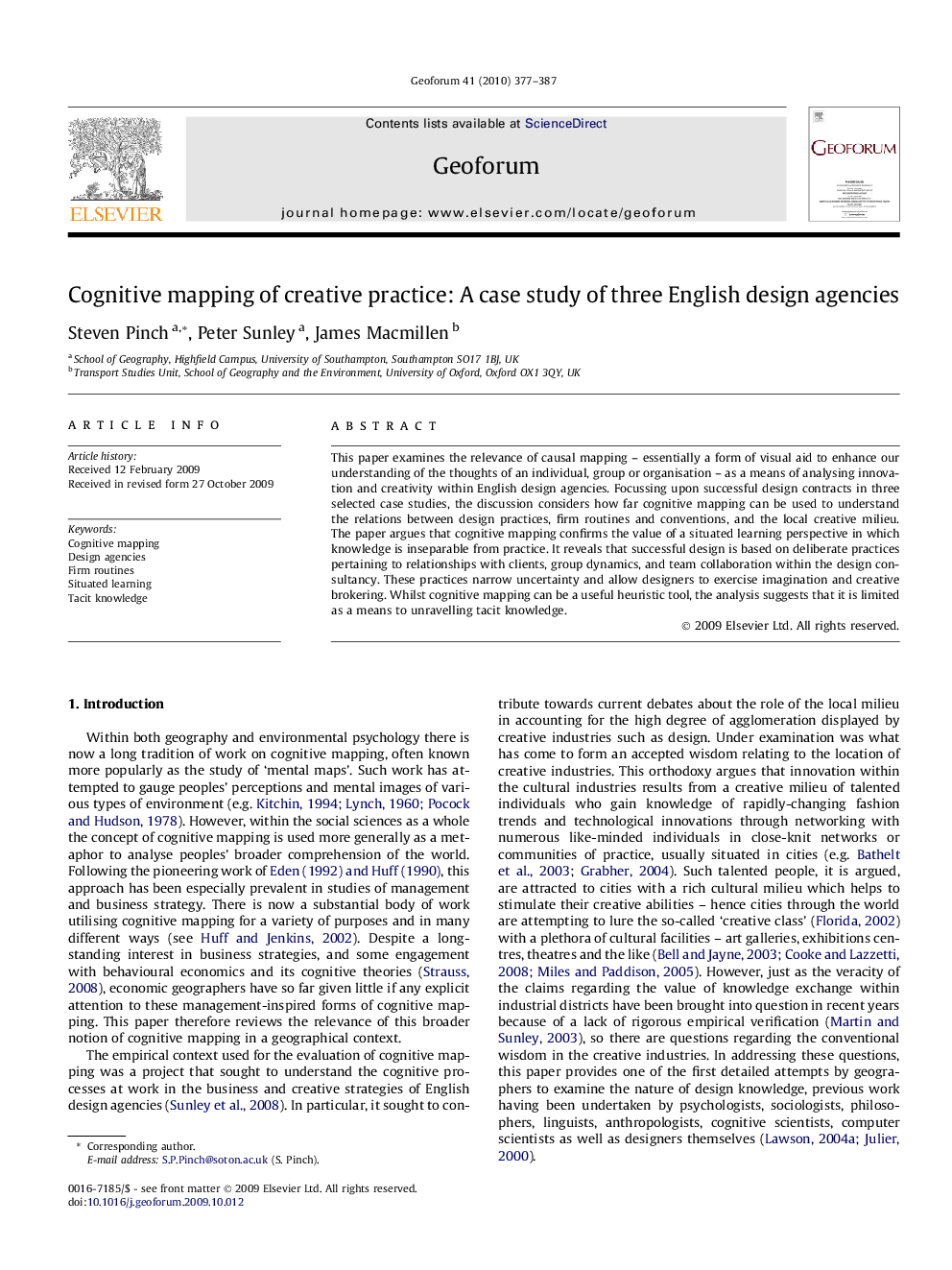| Article ID | Journal | Published Year | Pages | File Type |
|---|---|---|---|---|
| 5074664 | Geoforum | 2010 | 11 Pages |
Abstract
This paper examines the relevance of causal mapping - essentially a form of visual aid to enhance our understanding of the thoughts of an individual, group or organisation - as a means of analysing innovation and creativity within English design agencies. Focussing upon successful design contracts in three selected case studies, the discussion considers how far cognitive mapping can be used to understand the relations between design practices, firm routines and conventions, and the local creative milieu. The paper argues that cognitive mapping confirms the value of a situated learning perspective in which knowledge is inseparable from practice. It reveals that successful design is based on deliberate practices pertaining to relationships with clients, group dynamics, and team collaboration within the design consultancy. These practices narrow uncertainty and allow designers to exercise imagination and creative brokering. Whilst cognitive mapping can be a useful heuristic tool, the analysis suggests that it is limited as a means to unravelling tacit knowledge.
Related Topics
Social Sciences and Humanities
Economics, Econometrics and Finance
Economics and Econometrics
Authors
Steven Pinch, Peter Sunley, James Macmillen,
